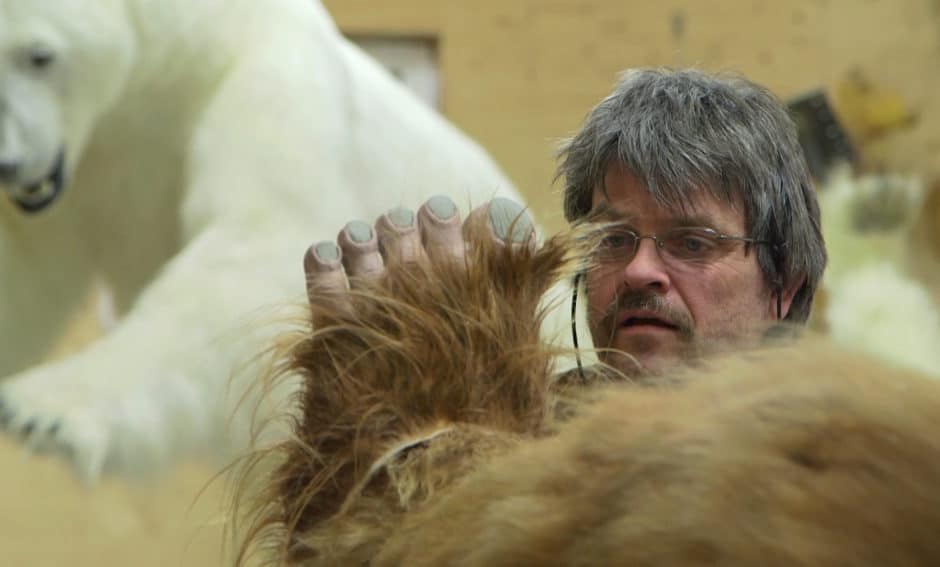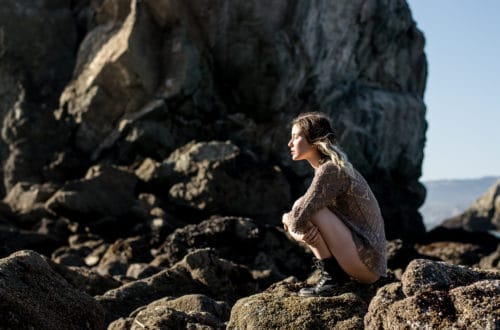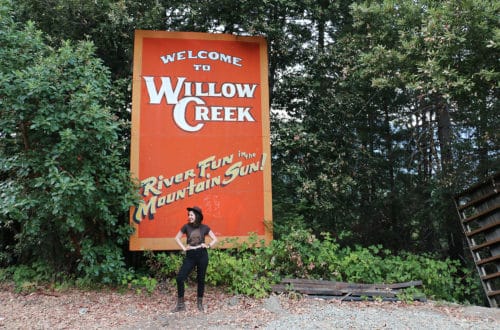When Ken Walker was little, he found a dead bird, broke it apart and put it back together. He carried a jar of bugs around because he wanted to open them up to see how their anatomy worked. Later, he became one of the best taxidermists on the planet, dead set on designing the perfect bigfoot. And then some Kansas City director came along and made a movie about that shit.
Big Fur is a documentary that takes you inside the world of taxidermy, giving you a sneak peak into the belly of the beast… often literally. You get to see Walker carve Bigfoot’s tummy out of Styrofoam, select the right fur from other animals to mimic Bigfoot’s pelt, choose the perfect glass eyes for a mythical hominid, and debate whether or not to add nipples. He’s doing all of this to enter his creation into the World Taxidermy Championship and win. He also thinks his fake sasquatch will someday lead him to a real bigfoot.
“There might be somebody someday that walks up and sees that model [of Bigfoot] and decides to give me what’s in his freezer,” Walker says. “That is my ultimate goal.”
“I’m positive that proof of Sasquatch already exists. I know there’s somebody out there that has something. I know for a fact. And I’m just waiting until I can get it,” Walker says in the film. “There might be somebody someday that walks up and sees that model [of Bigfoot] and decides to give me what’s in his freezer. That is my ultimate goal.”
The most important detail of this undertaking is that Walker hasn’t decided to create just any bigfoot, but the most famous bigfoot to ever walk the Earth: Patty.
Patty is the sasquatch from what’s called the “Patterson-Gimlin film,” a short movie recorded in 1969 by two dudes trekking in the wilds of Humboldt County. Some people think that it was staged as all get-out, and that the bigfoot in the film is just a guy in a monkey suit. Others, like Walker, believe it’s some of the best recorded evidence to date. But he didn’t always think this way.
At the film’s San Francisco Indie Fest premiere, Walker admits to a tumultuous relationship with Sasquatch. “I wasn’t a believer until I saw one myself,” Walker says, his thick helmet of graying hair hanging over his brow. “Actually, I wasn’t a believer even after I had an encounter. It wasn’t until people started coming into my shop and telling me stories, people I trusted, that I understood it was real.”
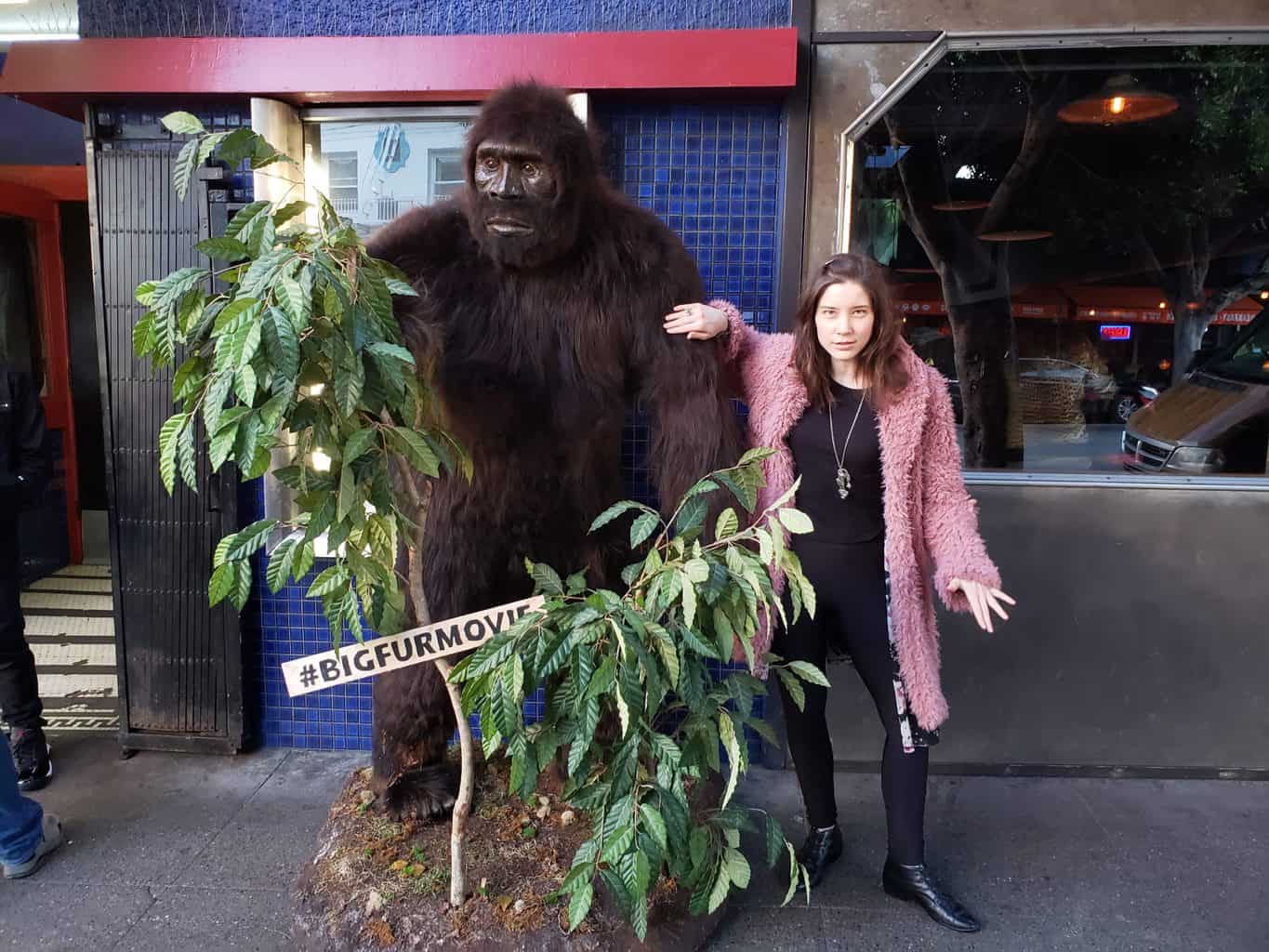
Outside the theater at the San Francisco film premiere, Walker’s Bigfoot creation is posed as if looking out from behind some thin trees. Standing next to the seven foot tall Patty, her pendulous furry breasts roughly eye level with my 5’10” frame, Walker tells me that he collects his own evidence, traversing the Canadian Rockies and interviewing hunters in his quest for truth. His freezer back home in Alberta, Canada is full of bags of bigfoot hair and crap. And while he can’t go into much detail, he’s had his own bigfoot evidence analyzed and scientists “couldn’t identify the species.”
“I asked if they were willing to put into writing that it is what I say it is,” Walker says, thick smile lines webbing out from his eyes. “They said absolutely not.”
Unlike Walker, Big Fur director Dan Wayne doesn’t have any skin in the game when it comes to Bigfoot’s discovery.
“Taxidermy is an underappreciated art form,” says director Dan Wayne. “It’s the craft that I love.”
“Eh, if I hang out with Ken long enough, I think Bigfoot is real, but usually I’m not so sure,” Wayne says. “Since the film aired I’ve been getting a ton of messages from strangers, sending me Bigfoot articles and memes. I appreciate the interest, but look man, I just made a movie. I don’t want all this shit.”
In fact, the Bigfoot aspect of the movie was just a cool side story for Wayne. He really wanted to make a documentary that changed people’s perspectives on taxidermy.
“Taxidermy is an underappreciated art form. It’s the craft that I love,” says Wayne, who stuffs a squirrel or other small roadkill a couple times a year. “Since Norman Bates in the movie Psycho, there’s been this idea that a taxidermist is always a kind of backwoods bubba or a psychopath. I want to help remove the stigma. That’s not reality.”
Wayne fell into taxidermy when wandering into a bar in Pittsburg, Kansas. They were having an auction, and Wayne spotted a set of once-alive, bushy squirrels playing guitars—then he placed the winning bid. “They were made by some hillbilly guy in his garage,” Wayne says. “And that was kind of the impetus. I realized I could make squirrels.”
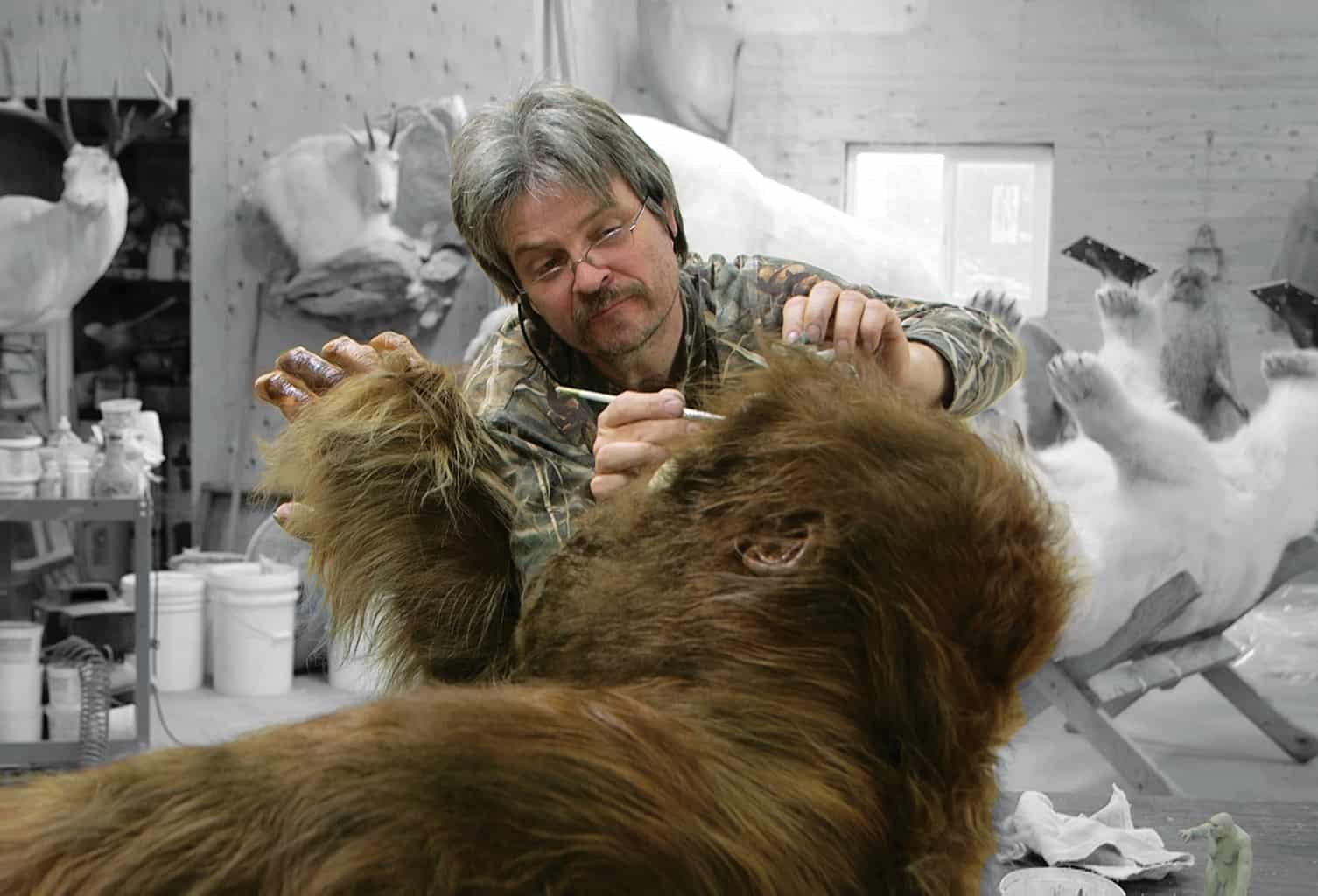
At the time, Wayne says he was feeling uninspired by photography as an art form since digital photography had taken over, and he needed something weird to whet his palate.
“Sure, dealing with dead animal parts was out of my comfort zone at the beginning. But if you do it right, there’s almost no blood, unless it’s been cut open or hit by a car,” Wayne says. “When you taxidermy a squirrel, you learn a lot about anatomy. It’s a weird marriage of art and science.”
It was surprising to find out from the film just how much artistry is required to make an animal look anatomically correct. Aside from taxidermists having to know how to sculpt, paint, and skin animals, they also have to be experts on the anatomy of the creatures they’re creating, and Walker is a master of these things.
“Before serial killer Norman Bates cast a shadow over the practice, taxidermy was revered as a valuable craft…”
Walker specializes in making extinct or endangered species out of other animal hides; he’s done this with a variety of creatures during his career, including a saber-toothed tiger and Irish elk. Walker created a giant panda that was so lifelike that panda keepers from the Smithsonian’s National Zoo thought it was legit.
In the early 2000s, Walker and a select few expert taxidermists were recruited to renovate the Behring Hall of Mammals in the Smithsonian National Museum of Natural History. His task was to mount a series of animals that had died in captivity in the National Zoo, many of which were necropsied or in pieces by the time they arrived to be mounted. Using only photos as reference, Walker was able to create accurate, pristine representations of the animals, including an okapi, orangutan, clouded leopard and many more.
Between scenes of Walker readying the Bigfoot for its debut, the documentary shows animated sequences explaining the history of taxidermy. It explains that before serial killer Norman Bates cast a shadow over the practice, taxidermy was revered as a valuable craft that could help aid in our understanding of extinct or rare species. In light of our rapidly changing planet, Wayne tells me, taxidermied animals may be one of the only ways future generations can know what creatures existed before.
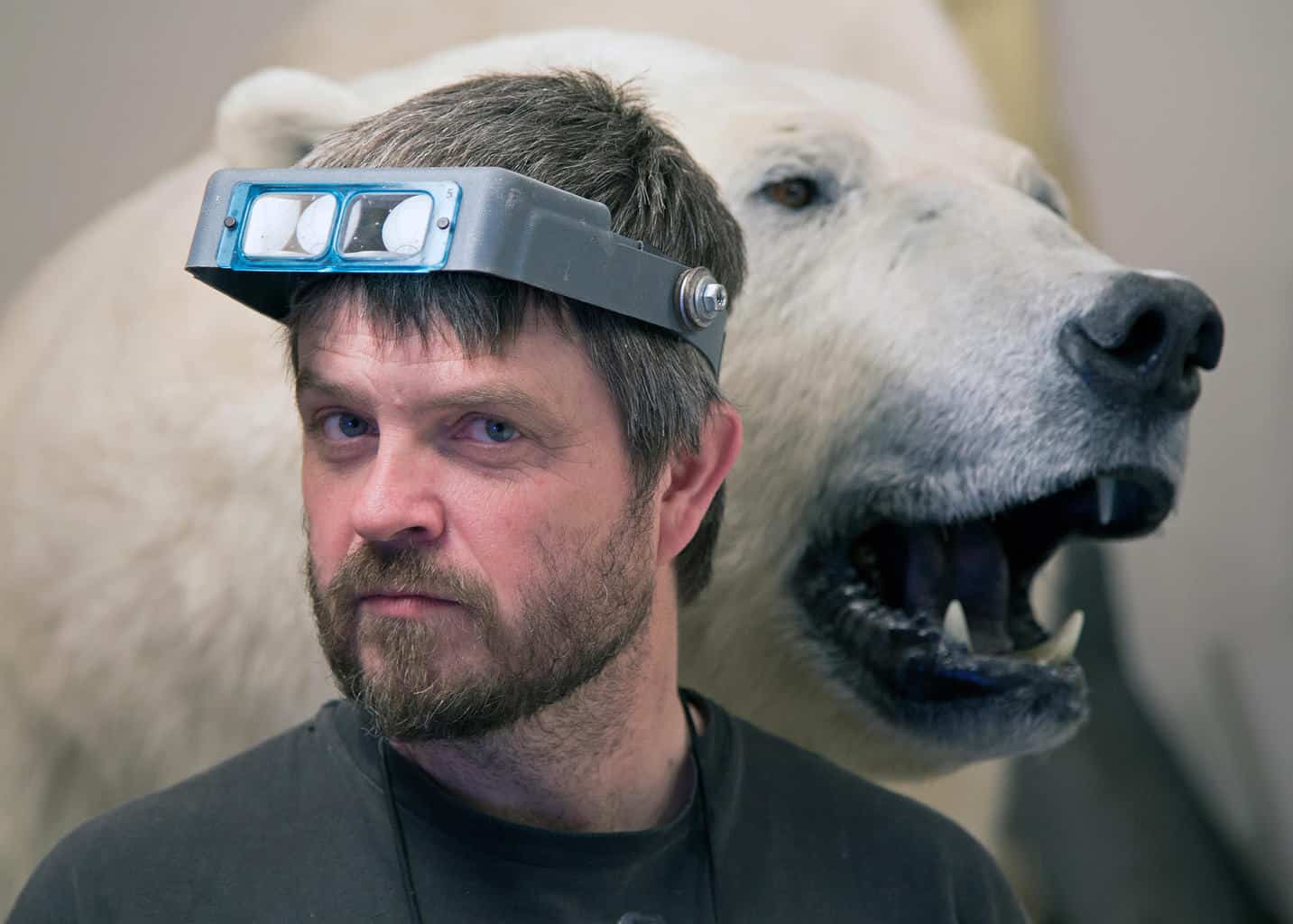
“Endangered animals now are growing in numbers. We’re losing resources and habitats at a faster rate,” Wayne says. “All we have are animal skins and taxidermy mounts of some of these creatures.”
Despite any beliefs Wayne might harbor as the director, he doesn’t stuff them down the viewer’s throat. You walk away from the film with the sense that you’ve been told a unique story about a captivating human being, rather than issued a sermon on the annals of taxidermy and morality. Actually, in the movie’s most tangled twist, Walker flashes his private life at you in a way that makes you want to cover your face. No spoilers here, but there was a point during the San Francisco premiere where nearly every audience member did just that.
“I can’t complain about the movie, even though I behaved badly. It was all honest,” Walker says. “When I watch the film, I see myself coming out of a hell, a prison, that I created myself. It was the greatest transition I’ll ever live through.”
For Wayne, it would have been easy to create a portrait of an artist if the artist would have just sat still.
Wayne says that Walker is just like he appears in the documentary: an eccentric, uncontrollable virtuoso.
Wayne, who hails from Kansas City, Missouri, would make plans to shoot in Walker’s studio in Alberta, Canada—a five hour flight, 27 hour drive and 565 hour walk according to Google Maps. But after he’d made the journey to shoot Walker constructing a bigfoot, Walker would decide instead to start mounting a goat. Or maybe he’d want to work on another large mammal like a muskox, moose or 12 foot tall polar bear. Sometimes Walker would have apprentices around his workshop, and he’d talk to them all day rather than working on his Bigfoot pet project.
For Wayne, it would have been easy to create a portrait of an artist if the artist would have just sat still.
“We’d be getting ready to shoot, and Ken would say, ‘Oh, I have to go to the bank to make a deposit.’ But then you see, he would have to flirt with the teller. Then he’d stop in town to have lunch, and there went the whole day. Meanwhile, he’d be an optimist who always insisted that he’d get stuff done,” Wayne says. “I should have been more pushy, but it’s not my style. When he finished the bigfoot though, it was great, and he took it to the World Taxidermy Championship.”
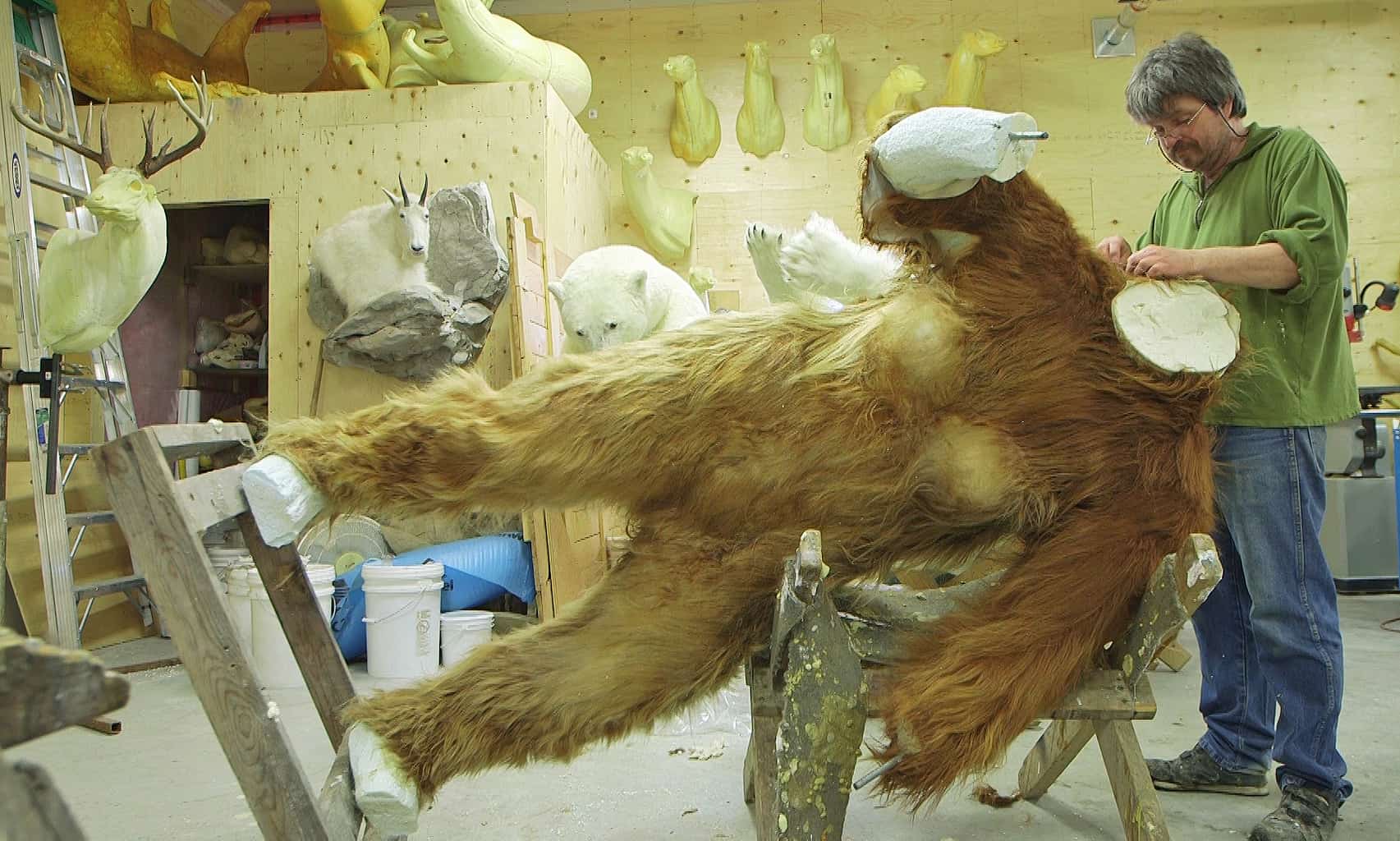
Other characters who make appearances in the documentary include Walker’s family, Bigfoot researchers, other taxidermists and some environmentalists—one of which is naturalist and author Robert Pyle, who says one of my favorite lines in the whole film about bigfoot belief.
“If we were to so tame the land that we can no longer even imagine the possibility of wild apes out there,” Pyle says, “then we will have lost something deep, something profound and something irretrievable.”
Wayne started shooting in 2013, and the documentary took six years for him to finish. Walker couldn’t be leashed. Wayne had to fire a capricious editor. The animated sequences took ages. He had to shoot most of it by himself while losing five girlfriends one after the other. Big Fur had become Wayne’s baby, and for a time, it wouldn’t stop screaming.
“When people hear I’ve made a documentary about taxidermy and Bigfoot, they think it’s a joke,” Wayne says.
Wayne put a hefty chunk of his own green into the film and went to great pains to make the movie happen. It was difficult to find people who shared his vision and wanted to help get the word out.
“When people hear I’ve made a documentary about taxidermy and Bigfoot, they think it’s a joke,” Wayne says.
A film professor at the University of Missouri-Kansas City told Wayne that his movie had no substance without having seen it. Another guy told him he wasn’t interested in getting involved in the production unless the topic was something sexy like exposing the fur industry. One night, Wayne submitted the finished movie to a film collaborative that helps indie filmmakers get distribution, thinking they’d at least give him a shot.
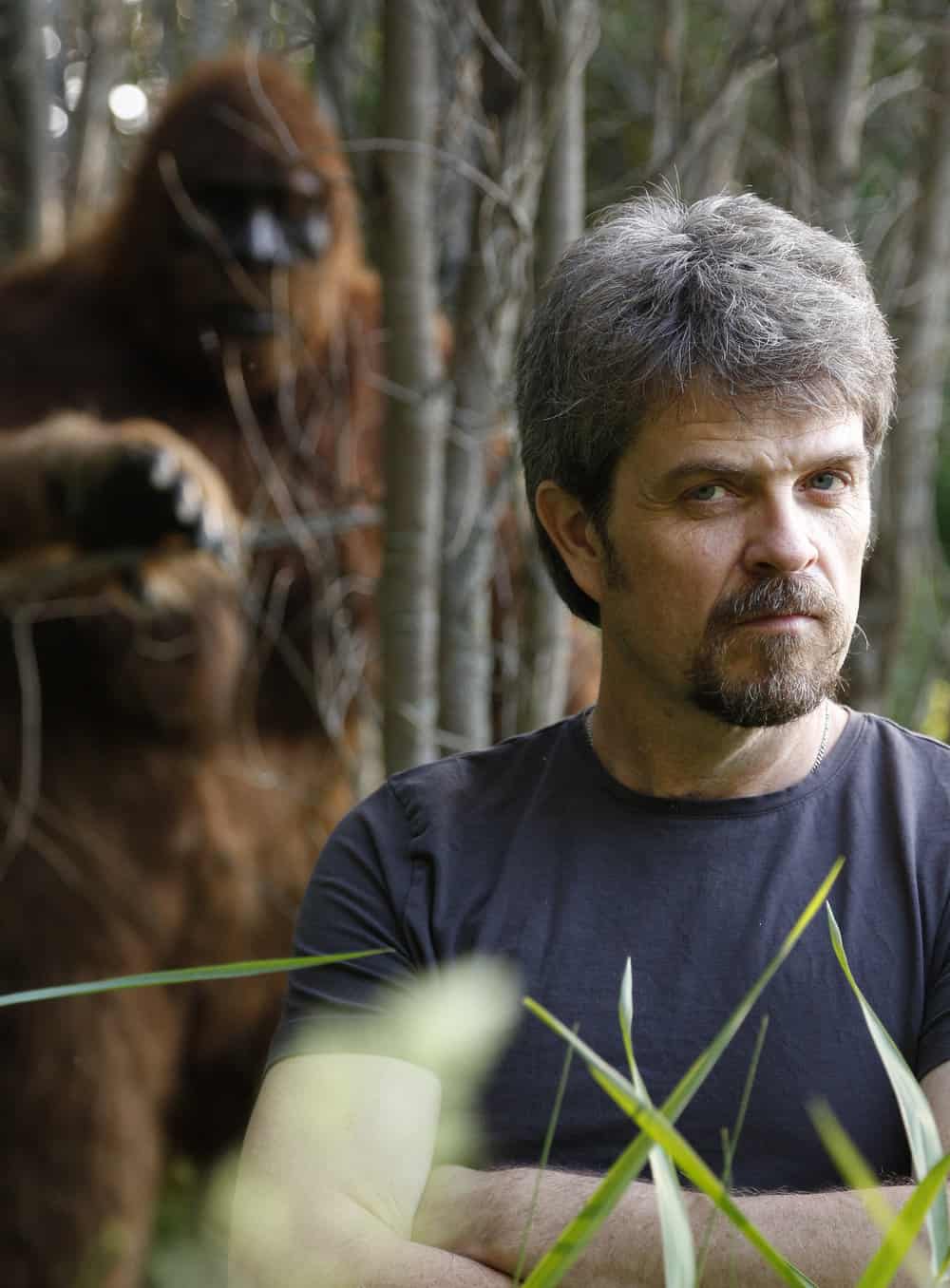
“I submitted Big Fur at 11:00 pm one night and about 15 minutes later I got a response back saying it didn’t fit their perspective,’” Wayne says. “They didn’t even watch it!”
Even though some people don’t believe in it, much like Bigfoot, the film lives! And it’s been shown at festivals such as the Virginia Film Festival, SlamDance and SF IndieFest, and will soon be showing at the 17th annual BigSky Documentary Film Festival later this month.
Walker, who Wayne describes as having a flair for the spotlight, seems to like the attention from all the fans at the Roxie Theater in San Francisco. When Walker announces that he has just retired from being a full time taxidermist, the audience gives some light “boos” and “awwws.” But he adds with a twinkle of pride in his eyes that his daughter, now in her 20s, has recently decided to take up taxidermy, presumably as Walker’s protégé. He also reveals that he wants to make a male bigfoot someday, standing at 10 feet tall. So even though Walker is on his way out, he’s still got one bigfoot in the door.
After the San Francisco screening, a woman with a flowing skirt and a flower wreath in her hair strolls up to Walker and immediately points toward her face. “My friend wanted me to tell you that my eyes are plastic,” she says, seeming to look deep into Walker’s face with her set of glittery, pale blue peepers. She explained that the artist who created them did it by putting molds into her sockets first. Walker leans in to take a closer look before launching into tales of his favorite fake optical organs.
Despite his freezer full of evidence and strong belief in the beast, the only bigfoot Walker has captured is the one he made himself. “I don’t even really like to talk about what I’ve gathered that much,” Walker says. “Because until you have irrefutable proof, you’re just like everybody else. You’ve got nothing.”
Meanwhile, outside the theater, passersby gawk at the dark, colossal figure looming under the streetlights, then quickly gather their own evidence. “Oh my God!” they yell. “It’s Bigfoot!” and pose with Patty for a picture.
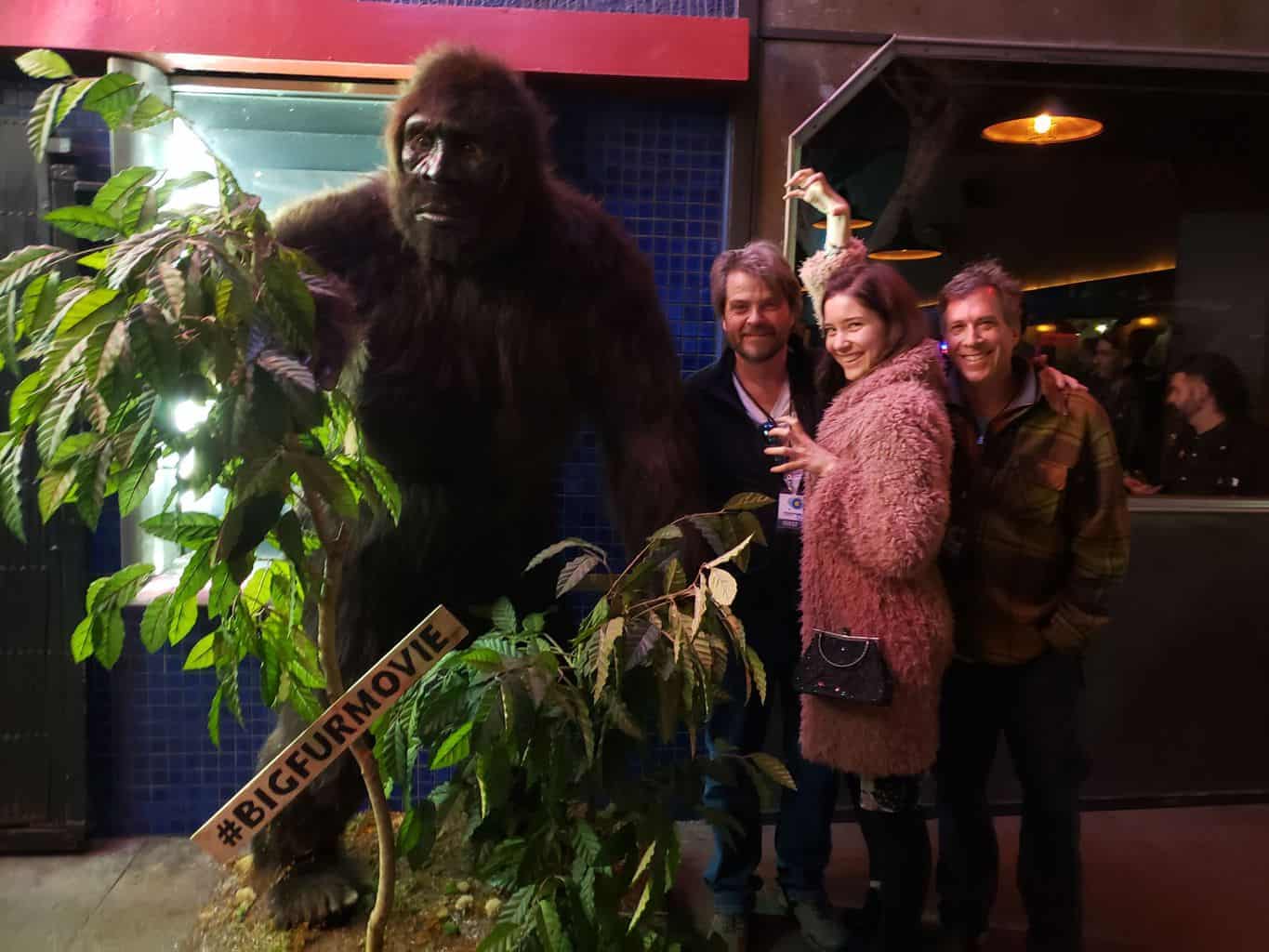
Big Fur is now available online on most platforms. You can watch it HERE. Also, you can check out the Big Fur website for updates on showings in the future.

